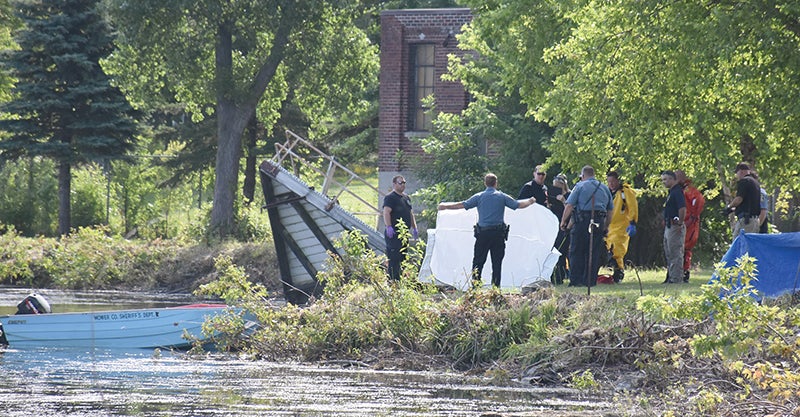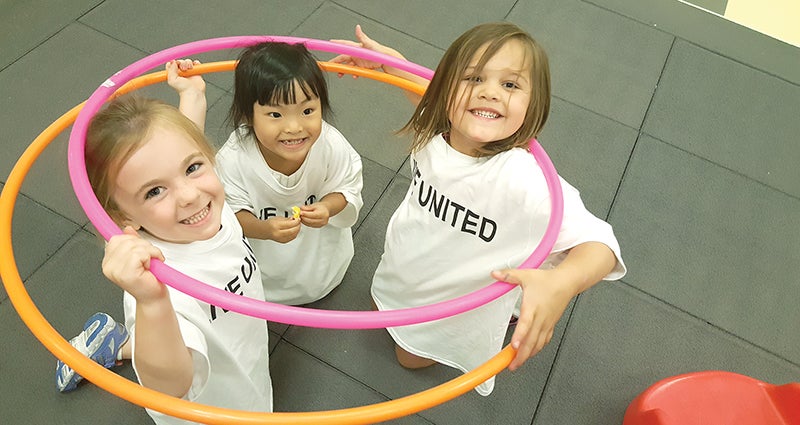Keep it growing
Published 7:00 pm Saturday, October 6, 2012
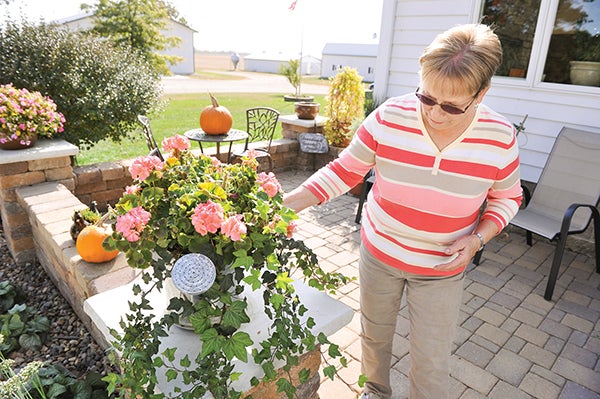
Elaine Braaten shows off a geranium with ivy sitting on her back porch. Elaine will use clippings from the ivy to grow and tend more ivy indoors during the winters. The geraniums will also be moved inside and tended to during the winter. Eric Johnson/photodesk@austindailyherald.com
Elaine Braaten doesn’t just garden around the house; she gardens inside it
When it comes to gardening, Elaine Braaten doesn’t leave her hobby at the doorstep.
The Austin resident, a 25-year gardener and member of two local growing organizations, makes good use of space both inside and outside to get the most out of her gardening efforts. She also has a few tips for how to keep plants alive — and in some cases even continue growing them — within the weather-shielding confines of the home.
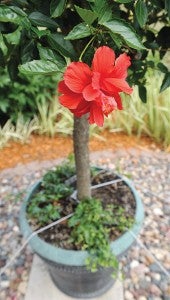
The flower of the habiscus tree in Elaine Braaten’s back yard. The entire tree will eventually be moved indoors during the winter. Eric Johnson/photodesk@austindailyherald.com
Braaten’s gardening experience is extensive. She has been a member of the Mower County Horticultural Society for about 13 years. She achieved her Master Gardener distinction in 2004, which requires members to complete annual community service and continued education requirements, according to MCHS.
Her Master Gardener status follows a life-long interest in gardening, which Braaten has cultivated at a young age.
“I grew up with my parents having a vegetable garden,” she said.
Her volunteer efforts include helping with the University of Minnesota Extension Service’s Junior Master Gardeners Program, geared towards children in third grade and older who want to learn basic gardening skills.
Participants can come and garden, and once students finish growing produce, Braaten teaches them to make something from it, like strawberry ice or jams of all different varieties.
Indoor gardening
Braaten has a few tips for gardeners who prefer not to hang up their gloves for the colder seasons.
One good plant to grow indoors is ivy, she said, because it can wind around a structure or even be made to twist about itself. It’s easiest to begin with a couple feet of the plant and go from there. Braaten recommends using twist ties from bread bags to shape the ivy as it grows.
“Some people put them outside in the summer, but I don’t,” Braaten said.
African violets are another great candidate for indoor growing, she said. They can’t stand a lot of heat or direct sun, and would die if you tried to grow them in your yard.
For those craving a little added decor and fun, fairy gardens are becoming popular, she said. Growers will combine smaller plants with figurines of fairies and houses to create little decorative villages. Many shops sell components — or even whole kits — that you can buy to add to your garden.
If you’re looking to go larger scale instead, Braaten warns that some larger crop plants, like tomatoes, don’t do well indoors without a greenhouse. But that doesn’t mean cultivating food is completely off-limits.
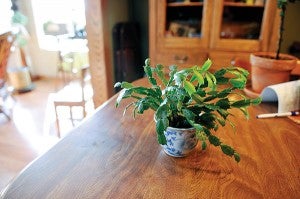
A Christmas cactus sits on the table in Elaine Braaten’s home. The cactus, if kept in a cool place with water withheld through the month of October, will bloom in time for Christmas. Eric Johnson/photodesk@austindailyherald.com
“People have windowsill herb gardens,” she said. These typically consist of a few planters with a variety of herbs in them set next to the window.
The most important tip, Braaten said, is to pay attention to each plant’s unique needs.
“You need to know what type of environment it wants,” she said. Often, the best information is on the label with storebought plants.
Consider whether indirect sunlight is better than leaving your plant out for a tan. Can it survive in the Mojave, or does it need flood-level rainfall? These are the types of questions that will help a plant flourish in the controlled, indoor climate.
Save outdoor plants during winter
Growing in the house isn’t the only way to make use of your indoor space. Saving outdoor plants, Braaten said, is just a matter of pulling them up by the roots and getting them in a pot or a paper bag in the basement before the first frost of the fall.
“I save my geraniums from year to year,” she said, adding she’ll also bring in begonias.
The environment inside creates a whole new set of rules. For example, you have to be careful not to water them too much or else they’ll rot, Braaten said. “You water them very sparingly to keep them alive.”
The lighting is also important for saving outdoor plants. Braaten recommends hanging plants about four inches underneath a grow light or a fluorescent light. If possible, you should outfit the light with one warm tube and one cool tube, to ensure the temperatures don’t get too high. And the lights should alternate on and off in 12 hour shifts to imitate the natural day and night of the outdoors.
“You can’t have 24-hour light,” Braaten said. “It would wear them out.”
In spring, plants need to make a smooth transition back to the outdoor environment. Let them sit outside for a few hours the first day, then bring them back in. Increase the amount of time they spend outside the next day. The plant should be ready to take on the elements again after seven to 10 days, depending on weather conditions.
“If it would be windy and cold, you only put it out for a little while,” Braaten explained.
When bringing plants in, be sure to spray them for insects, she said. Be prepared for the plant to look a little rough around the edges at first. It takes time for plants to acclimate to their new environments, and they may not look as healthy and vibrant as they would outdoors.


